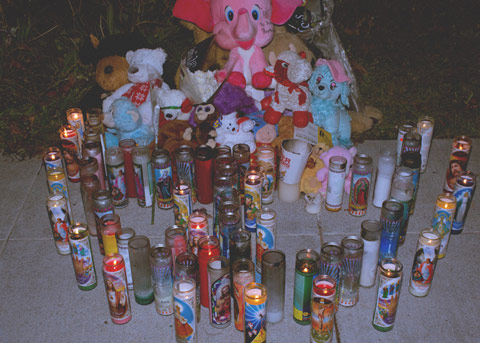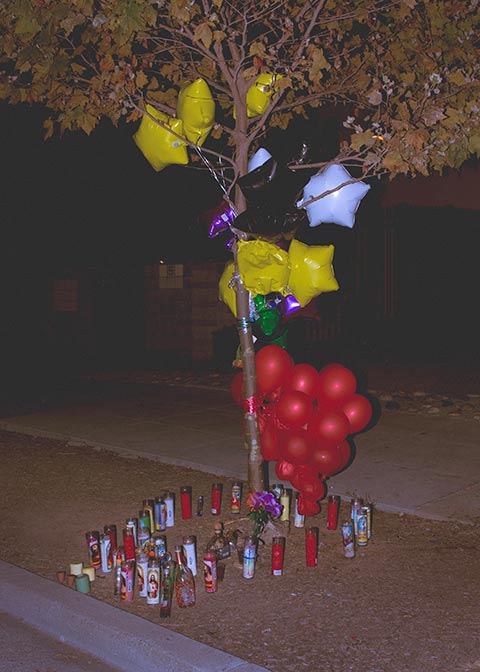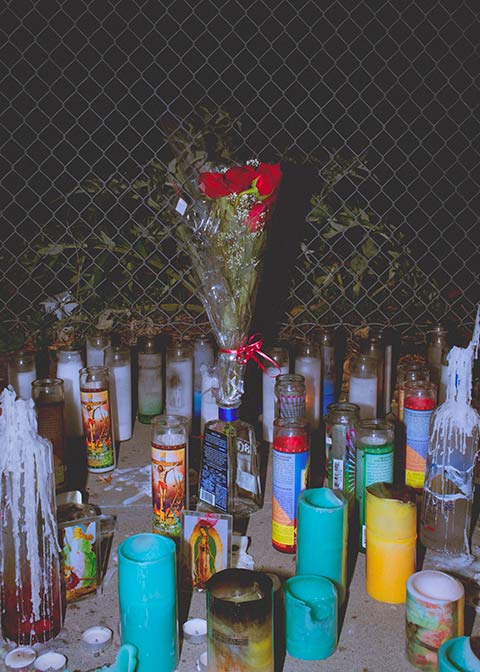Trish Morrissey worked on a body of work called "Seven Years" from 2001-2004. Trish uses herself and her sister in the photographs to mimic what she considers the iconic family images. She titled the body of work "Seven Years" because that is the age difference between her and her sister.
All of the photographs take place in their family home in Dublin. Trish acts as a photographer, director, narrator and model for this work. Her goal was to use the body language of the models to express what psychologically can seep through the photographs that occurs in all family dynamics. In each photograph Trish and her sister assume different roles and different characters, so each photograph is telling us something different about family dynamics and relationships.
You can see the rest of the Seven Years work in this link: http://www.trishmorrissey.com/works_pages/work-sy/workpg-01.html
Saturday, August 31, 2013
Weekly Post: Bryan Schutmaat
One of the photographers mentioned in class is Bryan Schutmaat. For most of his photos he uses muted tones and short depth of field to isolate his subjects. His landscapes usually contain a poignant object or objects to either lead your eye through the image or to hold your gaze, inviting you to ponder the lonely isolation. His portraits are close to medium range with sharp focus on the eyes while he lets the background stay soft with just enough detail to complete the narrative.
The series is aptly named "Grays the Mountain Sends." I can't help but wonder, is this what happens to the small towns once its main industry is exhausted or become obsolete. Not only the town but also the people of that town. No one in the portraits look happy to be there or even very hopeful of the future.
Weekly Post: Brandon Tauszik, White Wax

For the White Wax series, Brandon Tauszik took all his pictures at night, using roughly the same exposure. It looks like a very basic flash was also used. The subject matter is often candles and empty bottles of alcohol arranged on sidewalks or on the side of the road. Very rarely are people featured in these photographs. All of these photos are taken in Oakland, California.
What I feel the White Wax series does is it sheds light on a cultural practice that is a response to the gang violence that exists in Oakland. These are very similar to shrines I have seen on the side of highways and backroads here in Virginia of people who have died in automobile accidents, but according to the article on featureshoot.com, these shrines are often gone within 10 days. I think one of the reasons these are all taken at night is that many of these deaths that are being memorialized often take place at night as well. In a sense Brandon is further memorializing these victims by documenting their shrines into a more permanent medium. The shrines eventually disappear, but these photographs will remain for far longer.
Image Source: Featureshoot.com
Weekly Post: Bjørn Haldorsen by Stephanie
Got a chance to look at the Feature Shoot website and came across some work that was shot about a year ago by a photographer named Bjørn Haldorsen. The subject matter in this series was death and he photographed in New York's Evergreen Funeral Home and got some amazing images that give us a glimpse into what it's like to handle bodies for preparation.
I think death is an event that we all are obviously aware about, but we are never quite ready to face it when it enters our lives and takes those we love. No matter how much we know about death and how much we try our best to remind ourselves that "tomorrow isn't promised", we're never truly ready for it. Time begins to build space as our regular routine takes the fore-front and we forget to spend more and more time with the ones we love. Funerals are merely a tradition or our human way of saying "goodbye". It's a ritual that is practiced differently throughout the world and it amazes me to think that no matter the background or religious beliefs of the entire world - funerals are one practice that we all have in common as human beings. We all try to do our best to "send off" our loved ones even though we know there no longer is life in the body. What we do with the body after life has left it, has always been interesting to me. For me, it goes to show how resilient humans are - that we have perfected the way of preparing a body and have found ways to deal with the heaviness of death.
Accompanying video:
http://vimeo.com/43828703
Website:
http://www.bjornhaldorsen.com
 |
Accompanying video:
http://vimeo.com/43828703
Website:
http://www.bjornhaldorsen.com
Wednesday, August 28, 2013
Sunday, August 25, 2013
Subscribe to:
Posts (Atom)













